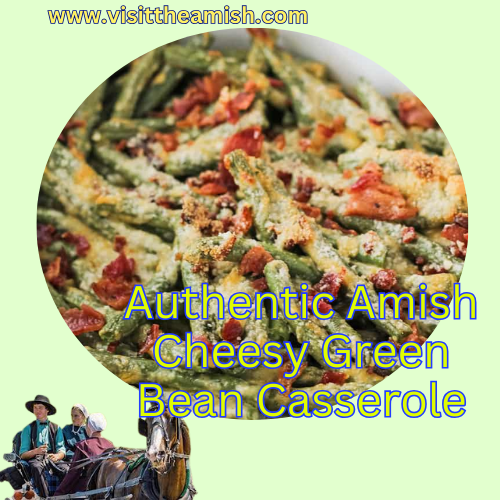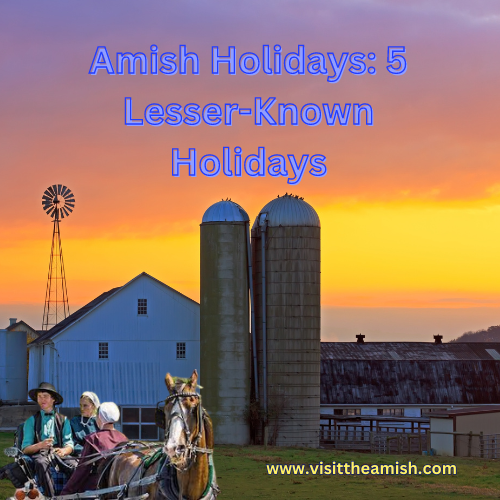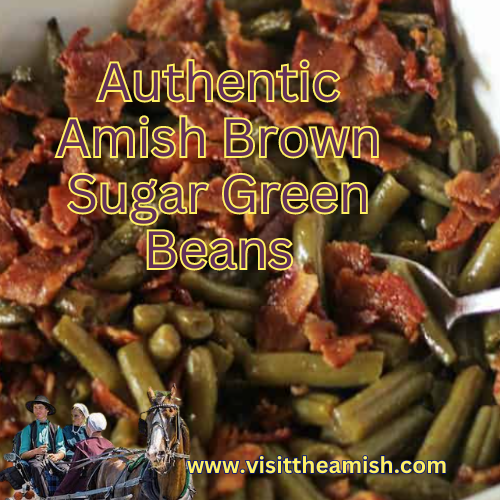Understanding Alcohol in Amish Culture: A Nuanced Perspective
Chapter 1: Can Amish Drink Alcohol?
When examining the intricate dynamics between the Amish and alcohol, it becomes evident that there is a rich tapestry of diversity within the Amish community. It would be remiss to assume a singular stance or view when it comes to the consumption of alcohol among the Amish, as their perspectives are as multifaceted as the colors of an autumn landscape.
Within the Amish community, the question of whether individuals can partake in alcohol is not a binary one with a simple “yes” or “no” response. Instead, it is a complex matter that is heavily influenced by a myriad of factors, including the specific Amish group and church one belongs to, as well as the customs and beliefs upheld by these distinct communities.
Each Amish group and church has its own unique set of traditions and guidelines, with varying degrees of acceptance or prohibition of alcohol. Some Amish communities embrace the moderate consumption of alcohol within certain parameters, while others adhere to a more conservative approach, abstaining entirely from its consumption.
One reason for this diversity in views can be attributed to the historical and cultural idiosyncrasies that have shaped each Amish community over time. The Amish, who trace their roots back to 16th-century Europe, have migrated to different regions of North America, forming different settlements and adopting distinct practices along the way. As a result, the attitudes towards alcohol have evolved and diversified, reflecting the local influences and experiences of each community.
Furthermore, the Amish value the principle of community cohesion and communal decision-making. Decisions regarding alcohol consumption are often made collectively within the Amish community, guided by the leaders and bishops who play a pivotal role in shaping the social and moral fabric of the community. These leaders consider factors such as their interpretation of biblical teachings, the potential impact of alcohol on individual and communal well-being, and the preservation of their distinct cultural identity.
In conclusion, the relationship between the Amish and alcohol is a nuanced and multifaceted one. To understand it fully, one must appreciate the diverse customs and beliefs found within the Amish community. It is an ongoing journey of discovery, in which the exploration of this complex topic sheds light on the rich tapestry of Amish culture and the diversity that exists within it.
Chapter 2: Which Amish Drink Alcohol?
Among the Amish communities, the attitudes towards alcohol exhibit a fascinating and diverse spectrum. While some clans uphold a strict prohibition on the consumption of alcohol, others adopt a more lenient standpoint. Take, for instance, the New Order Amish, a distinctive group known for their resolute rejection of alcohol. They adhere to traditional values and beliefs that advocate for a teetotaler lifestyle.
However, it is important to note that not all Amish communities share this same perspective. In some groups, there exists a more relaxed viewpoint towards alcohol consumption. Homemade wines, such as beet or dandelion wine, occasionally find a place within certain Amish communities, often for their perceived health benefits. These wines are carefully crafted using natural ingredients and traditional methods, aligning with the Amish tradition of self-sufficiency and simplicity.
The varying attitudes towards alcohol within the Amish community reflect the complexities of navigating modern influences while preserving cultural values and traditions. This diversity adds to the rich tapestry of Amish life, underscoring the individuality and autonomy that exists within these close-knit communities. From steadfast abstinence to selective moderation, the Amish showcase the intricate balance between tradition and adaptability in their approach to alcohol consumption.
As the Amish continue to evolve and adapt to contemporary society, the intricacies of their relationship with alcohol will undoubtedly continue to inspire discussion and understanding. The nuances within each community’s stance on alcohol offer a glimpse into the diversity that exists even within a seemingly homogenous group like the Amish. It serves as a reminder that, irrespective of cultural identity, perspectives on alcohol and its role within communities are shaped by a multitude of factors and individual beliefs.
Interestingly, some plainer Amish groups, often assumed to be more conservative, actually embrace alcohol consumption, while the New Order Amish, relatively progressive in certain aspects, firmly oppose it.
Chapter 3: Alcohol in Amish Church Services
Although alcohol consumption might be discouraged or even prohibited in daily life for some Amish groups, it does have a religious context within certain church services. During communion, some Amish communities use wine (or grape juice in some cases) in accordance with their interpretation of Scripture.
The Amish, known for their commitment to simplicity and traditional values, have a unique approach to alcohol consumption that may vary from community to community. While many Amish individuals choose to abstain from drinking alcohol altogether, it is important to highlight that this practice is not uniform across all Amish groups.
For some Amish communities, their interpretation of the Bible allows for the use of wine or grape juice during religious ceremonies like communion. This adherence to the sacraments aligns with their understanding of Scriptures, which emphasize the significance of the Last Supper and the symbolic representation of Christ’s blood through the use of wine.
It is interesting to note that in certain Amish services, the option to use grape juice instead of wine exists as a way to accommodate those who choose not to consume alcohol. This demonstrates the flexibility within Amish communities to adapt certain practices to align with their respective beliefs while adhering to their core religious principles.
Despite the theological acceptance of alcohol within the context of religious ceremonies, it is important to stress that the broader Amish ethos remains grounded in simplicity and moderation. Alcohol consumption outside of these religious settings is generally discouraged or prohibited among many Amish groups as a reflection of their commitment to a sober and community-oriented lifestyle.
In summary, while alcohol consumption is not a common and widely accepted practice among the Amish in their daily lives, its religious significance within certain church services, such as communion, highlights the nuanced and diverse beliefs within different Amish communities. Their interpretation of Scripture allows for the use of wine or grape juice as part of their religious rituals, but outside of these specific contexts, alcohol is typically discouraged or prohibited.
Chapter 4: Amish Youth & Alcohol
Instances of Amish youth engaging in alcohol-related activities occasionally surface in the media, reflecting the broader societal concerns about underage drinking. This relatively rare occurrence brings to light the complexities of how different Amish communities approach the issue. While some communities may choose to crack down on such activities, others adopt alternative strategies that focus on education and community support.
In response to these concerns, some Amish communities have established supervised youth groups and education programs aimed at addressing alcohol-related issues. These initiatives provide a supportive environment where young people can gather and engage in constructive activities under the guidance of trusted adults. By offering alternative ways to spend their time, these programs aim to reduce the appeal and accessibility of alcohol for Amish youth.
Education also plays a crucial role in addressing alcohol-related issues within the Amish community. Through community workshops, discussions, and awareness campaigns, the aim is to promote understanding and inform young people about the potential consequences of underage drinking. By equipping them with knowledge and resources, Amish communities hope to empower their youth to make responsible choices regarding alcohol consumption.
It is important to note that Amish communities, like any other, are not immune to the challenges posed by alcohol and underage drinking. However, their approaches to addressing these issues may differ due to their unique cultural and religious beliefs. By choosing to focus on education, community support, and alternative activities, some Amish communities aim to provide their youth with the necessary tools to navigate the potential risks associated with alcohol effectively.
In conclusion, instances of Amish youth engaging in alcohol-related activities do occasionally occur, highlighting concerns about underage drinking that extend beyond mainstream society. However, Amish communities employ a variety of strategies, such as supervised youth groups and education programs, to address these issues while staying true to their values. By fostering a supportive environment and promoting education, these communities strive to empower their youth to make informed choices and navigate the challenges posed by alcohol responsibly.
Chapter 5: The Amish & Alcohol Abuse
While the prevalence of alcohol abuse among Amish adults is notably low, individual struggles with alcoholism do exist within the community. Publicly, the Amish aren’t known for excessive drinking, and instances of alcohol abuse, especially among adults, are relatively uncommon.
This can be attributed to several factors deeply rooted in Amish cultural and religious beliefs. The Amish way of life emphasizes simplicity, community values, and self-sufficiency. Their close-knit communities provide a strong support system and promote a sense of accountability among its members, helping to discourage excessive alcohol consumption.
Additionally, the Amish value modesty and reject many aspects of modern society, including substance abuse. They prioritize family, faith, and hard work, which tends to leave little room for excessive drinking or indulgence in vices. The Amish also place great importance on maintaining a clear mind and a healthy body as part of their commitment to living a righteous and disciplined life.
It is worth noting that while alcohol abuse is less prevalent among Amish adults, it doesn’t mean that it doesn’t exist. Like any community, the Amish are not immune to the challenges and temptations that individuals may face. However, their strong social support network and the emphasis on personal responsibility often enable them to address such issues in a timely and effective manner. This is typically done through the involvement of family, church elders, or community leaders who provide guidance, counseling, and support to those struggling with alcoholism.
Overall, the Amish community’s low prevalence of alcohol abuse can be attributed to a combination of cultural values, social support, and adherence to a way of life that encourages moderation and self-discipline. It is a testament to the strength and resilience of the Amish people in maintaining their unique lifestyle while effectively addressing the challenges that may arise.
Chapter 6: Comparing Amish Alcohol Use to Non-Amish Use
Overall, alcohol doesn’t constitute a fundamental aspect of Amish culture. The Amish community holds strong religious beliefs that emphasize simplicity, humility, and the importance of community. As a result, many Amish individuals choose to abstain from alcohol consumption. However, it is important to note that the Amish community is diverse and there can be variations in attitudes towards alcohol within different communities.
While some communities may have a more relaxed stance on alcohol, the average Amish person’s alcohol consumption tends to be lower than that of the average non-Amish individual. This can be attributed to the cultural values and lifestyle choices that prioritize health, family, and productive work. The Amish prioritize taking care of their bodies and maintaining a strong work ethic, which often includes avoiding substances that can hinder their physical and mental well-being.
Additionally, the Amish value communal living and the importance of setting a good example for others. They believe that excessive alcohol consumption can lead to negative behaviors and potentially harm the community. Therefore, it is not uncommon for Amish individuals to abstain from drinking alcohol altogether or limit their consumption to special occasions or moderate levels within a controlled setting.
It is also worth noting that the Amish rely heavily on their close-knit community for support, and alcohol can sometimes cause division or conflict within the community. By abstaining from or moderate alcohol consumption, the Amish are able to maintain strong bonds and enhance the overall harmony within their community.
In summary, while alcohol may not be completely absent in all Amish communities, it is generally not a significant part of their culture. The Amish place more emphasis on their religious beliefs, simple living, and maintaining strong family and community ties. Their overall approach to alcohol consumption reflects their commitment to leading a disciplined, healthy, and spiritually-focused lifestyle.
In the Amish community, beverages like soda, coffee, and raw milk are more commonly enjoyed than alcohol. The cultural significance and prevalence of alcohol use differ vastly among various Amish groups, emphasizing the need to avoid generalizations.
Understanding the relationship between the Amish and alcohol unveils a multifaceted narrative. While some groups strictly abstain, others integrate alcohol into their lives in varied capacities. The Amish community’s approach to alcohol is complex, shaped by individual beliefs, community customs, and religious interpretations, illustrating the diversity within this fascinating culture.
Like this:
Like Loading...







